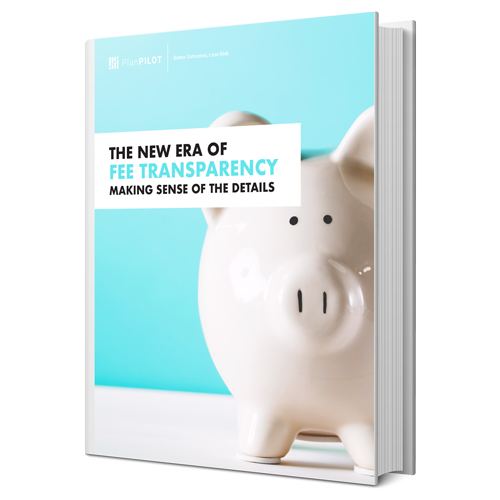Return on investment. Compound annual growth rate. Market outperformance. Preservation of principal. Risk adjusted performance. There’s no shortage of metrics available to retirement investors looking to gauge the success of their portfolio. It can be a bit more challenging – and more qualitative – for plan sponsors to gauge their plan’s overall impact on their organization and their participants’ ability to retire. It’s not easy to get a good sense of whether the 401(k) or 403(b) plan your institution offers stacks up favorably with employee expectations. With that said, however, it’s essential for sponsors to have a good idea of what makes their plan attractive (or not), how to measure it and the overall impact on employee satisfaction. Here’s how to start tracking your retirement plan – and its effect on the bottom line.
Quantify
While there’s more to consider than hard data, measuring success in the 401(k)/403(b) arena is impossible without numbers. Perhaps the easiest metric to use in gauging overall plan success is participation rate. If a relatively low proportion of potential participants are using the plan, that’s a good indication that something about it is unattractive. Conversely, if most employees take advantage of the retirement offering(s), that suggests that the sponsor is doing something right.
Contribution rate, which is a closely related statistic, can help employers measure engagement in a different way. By tracking the percentage of available income employees dedicate to their retirement plans, plan sponsors can estimate their general level of engagement with the plan. A high contribution rate is a clear sign that the retirement savings plan offering is seen as valuable. Meanwhile, a low contribution rate might signal the need for participant education or plan design changes.
Perhaps the single most insightful piece of data available to plan sponsors though is what’s often dubbed retirement readiness. This is a snapshot of a participant’s current 401(k)/403(b) balance converted to a multiple of annual income and compared to the income replacement level needed to live in retirement. The metric does an excellent job in encapsulating how well plans are preparing their participants for the ultimate goal of retirement. Those who are approaching retirement age should have high multiples on the retirement readiness scale. If they don’t, then the plan isn’t achieving its goal.
Benefit
Having an effective retirement savings program can come with real rewards for institutions that are able to stay on the right side of these measurements. They represent one of the most powerful tools available for employee attraction and retention. Most employees who are looking for a long-term opportunity will regard their 401(k)/403(b) as essential to their financial security. As such, having a good program in place can be a true competitive advantage in the talent market.
Part of getting there involves participant education. While many – even most – workers intuitively understand the importance of retirement planning, relatively few are as engaged with their 401(k)/403(b) as they should be. Once the hard work of providing access to an effective retirement investment strategy is done, employers need to make sure to follow up to boost overall awareness. Not only will this add visibility to an important recruitment tool, but it can also move the needle in terms of making sure participants are getting the most out of their plans.
Implement
Educating participants isn’t as simple as just hosting an occasional lunch-and-learn or making digital materials available for review, however. There’s a lot to consider in crafting an effective, repeatable plan of participant education. Sponsors need to consider the general level of financial literacy across their workforce, which can vary substantially from industry to industry, and their participants’ preferred methods of communication.
To avoid dumping resources into an ineffective education program, it can be worthwhile to consider bringing in an external plan consultant to help with design and implementation. PlanPILOT has years of experience in assisting with education programs tailored specifically to the needs of the organization. If you’re concerned that employees are not taking advantage of the resources available to them – or that the plan itself may be inadequate – don’t hesitate to use us as a resource. Contact us at (312) 973-4911 or info@planpilot.com so we can help your retirement plan administration team and plan participants achieve better outcomes.
|
The New Era of Fee Transparency An important fiduciary responsibility is to understand the services being provided and ensure that the fees being charged to the plan are reasonable. |
Related Posts
 Increase Employee Participation in Your Retirement Plan - Plan sponsors can sometimes struggle to effectively communicate a plan's benefits to employees in ways that boost engagement and enrollment. Don't let your plan wither… ...Read More
Increase Employee Participation in Your Retirement Plan - Plan sponsors can sometimes struggle to effectively communicate a plan's benefits to employees in ways that boost engagement and enrollment. Don't let your plan wither… ...Read More Help Participants Stay On Course in Turbulent Times - Plan sponsors can help participants to stay the course by reminding them that short-term market fluctuations, even unprecedented ones, should not affect their long-term investment… ...Read More
Help Participants Stay On Course in Turbulent Times - Plan sponsors can help participants to stay the course by reminding them that short-term market fluctuations, even unprecedented ones, should not affect their long-term investment… ...Read More Encouraging Millennials to Participate in Retirement Plans - To attract and retain millennials, the largest age group of U.S. workers, employers need to consider the unique needs of this generation in a retirement… ...Read More
Encouraging Millennials to Participate in Retirement Plans - To attract and retain millennials, the largest age group of U.S. workers, employers need to consider the unique needs of this generation in a retirement… ...Read More

